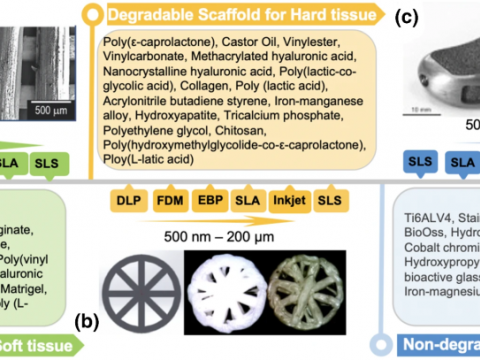Robot Density nearly Doubled globally
全球机器人密度几乎翻倍
The use of industrial robots in factories around the world is accelerating at a high rate: 126 robots per 10,000 employees is the new average of global robot density in the manufacturing industries – nearly double the number five years ago (2015: 66 units). This is according to the 2021 World Robot Report.
根据《2021年世界机器人报告》的数据,世界各地工厂对工业机器人的使用正在高速发展,每万名员工拥有126台机器人是制造业中全球机器人密度的最新平均值--几乎是五年前的两倍(2015年:66台)。
By regions, the average robot density in Asia/Australia is 134 units, in Europe 123 units and in the Americas 111 units. The top 5 most automated countries in the world are: South Korea, Singapore, Japan, Germany, and Sweden.
按地区划分,亚洲/澳大利亚的平均机器人密度为134台,欧洲为123台,美洲为111台。世界上自动化程度最高的前5个国家是。韩国、新加坡、日本、德国和瑞典。
“Robot density is the barometer to track the degree of automation adoption in the manufacturing industry around the world,” says Milton Guerry, President of the International Federation of Robotics.
国际机器人联合会主席Milton Guerry说:“机器人密度是跟踪世界各地制造业自动化采用程度的晴雨表。”

Asia
亚洲
The development of robot density in China is the most dynamic worldwide: Due to the significant growth of robot installations, the density rate rose from 49 units in 2015 to 246 units in 2020. Today, China’s robot density ranks 9th globally compared to 25th just five years ago.
中国的机器人密度发展是全世界最活跃的。由于机器人安装量的大幅增长,密度率从2015年的49台上升到2020年的246台。今天,中国的机器人密度在全球排名第9位,而五年前仅为第25位。
Asia is also the home of the country with the world´s highest robot density in the manufacturing industry: the Republic of Korea has held this position since 2010. The country’s robot density exceeds the global average seven-fold (932 units per 10,000 workers). Robot density had been increasing by 10% on average each year since 2015. With its globally recognized electronics industry and a distinct automotive industry, the Korean economy is based on the two largest areas for industrial robots.
亚洲也是世界上制造业机器人密度最高的国家的所在地:韩国自2010年以来一直保持领先地位。该国的机器人密度超过了全球平均水平的7倍(每万名工人932台)。自2015年以来,机器人密度平均每年增加10%。凭借其全球公认的电子工业和独特的汽车工业,韩国经济以工业机器人的两个最大应用领域为基础。
Singapore takes second place with a rate of 605 robots per 10,000 employees in 2020. Singapore’s robot density had been growing by 27% on average each year since 2015.
新加坡以2020年每万名员工拥有605个机器人的比率位居第二。自2015年以来,新加坡的机器人密度平均每年增长27%。
Japan ranked third in the world: In 2020, 390 robots were installed per 10,000 employees in the manufacturing industry. Japan is the world´s predominant industrial robot manufacturer: The production capacity of Japanese suppliers reached 174,000 units in 2020. Today, Japan´s manufacturers deliver 45% of the global robot supply.
日本位居世界第三。2020年,在制造业中,每万名员工安装390台机器人。日本是世界上最主要的工业机器人制造商。2020年,日本供应商的生产能力达到17.4万台。今天,日本的制造商提供了全球机器人供应的45%。
North America
北美
Robot density in the United States rose from 176 units in 2015 to 255 units in 2020. The country ranks seventh in the world – ahead of Chinese Taipei (248 units) and China (246 units). The modernization of domestic production facilities has boosted robot sales in the United States. The use of industrial robots also aids to achieve decarbonization targets e.g. in the cost-efficient production of solar panels and in the continued transition towards electric vehicles. Several car manufacturers have announced investments to further equip their factories for new electric drive car models or to increase capacity for battery production. These major projects will create demand for industrial robots in the next few years.
美国的机器人密度从2015年的176台上升到2020年的255台。美国在全球排名第七,超过了中华台北(248台)和中国(246台)。国内生产设施的现代化推动了美国的机器人销售。工业机器人的使用也有助于实现脱碳目标,例如,在成本效益高的太阳能电池板生产和继续向电动汽车过渡方面。一些汽车制造商已经宣布投资,为新的电动汽车模型进一步装备他们的工厂,或增加电池生产的能力。这些重大项目将在未来几年创造对工业机器人的需求。
Europe
欧洲
Europe´s most automated country is Germany - ranking 4th worldwide with 371 units. The annual supply had a share of 33% of total robot sales in Europe 2020 - 38% of Europe’s operational stock is in Germany. The German robotics industry is recovering, mainly driven by strong overseas business rather than by the domestic or European market. Robot demand in Germany is expected to grow slowly, mainly supported by demand for low-cost robots in the general industries and outside traditional manufacturing.
欧洲自动化程度最高的国家是德国--以371台排名全球第四。年供应量占欧洲2020年机器人总销售量的33%--欧洲38%的运营库存在德国。德国机器人行业正在复苏,主要是由强大的海外业务驱动,而不是由国内或欧洲市场驱动。德国的机器人需求预计将缓慢增长,主要由一般行业和传统制造业以外的低成本机器人需求支撑。
France has a robot density of 194 units (ranking 16th in the world), which is well above the global average of 126 robots and relatively similar compared to other EU countries like Spain (203 units), Austria (205 units) or The Netherlands (209 units). EU members like Sweden (289 units), Denmark (246 units) or Italy (224 units), have a significantly higher degree of automation in the manufacturing segment.
法国的机器人密度为194台(世界排名第16位),高于全球126台的平均水平,与西班牙(203台)、奥地利(205台)或荷兰(209台)等其他欧盟国家相比则相对接近。像瑞典(289台)、丹麦(246台)或意大利(224台)这样的欧盟成员,在制造业领域的自动化程度明显更高。
As the only G7 country – the UK has a robot density below the world average of 126 units with 101 units, ranking 24th. Five years ago, the UK´s robot density was 71 units. The exodus of foreign labor after Brexit increased the demand for robots in 2020. This situation is expected to prevail in near future, the modernization of the UK manufacturing industry will also be boosted by massive tax incentives, the “super-deduction”: From April 2021 until March 2023, companies can claim 130% of capital allowances as a tax relief for plant and machinery investments.
作为唯一的G7国家,英国的机器人密度低于世界平均水平的126台,只有101台,排名第24。五年前,英国的机器人密度为71台。英国脱欧后,外国劳动力的外流增加了2020年对机器人的需求。这种情况预计将在不久的将来出现,英国制造业的现代化也将受到大规模税收优惠政策的推动,即 "超级减免"。从2021年4月到2023年3月,公司可以申请130%的资本津贴作为工厂和机器投资的税收减免。
采编:www.znzbw.cn










 经营性网站备案信息
经营性网站备案信息 ICP经营许可证
ICP经营许可证 营业执照副本
营业执照副本 不良信息举报中心
不良信息举报中心